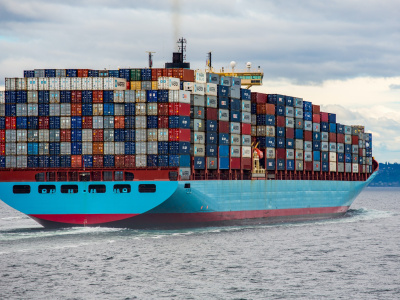
Trade agreements, non-trade provisions and bilateral foreign direct investment
Today’s deeper and more complex preferential trade agreements have ushered in substantial growth in bilateral foreign direct investment (FDI) between partners. Non-trade related provisions in trade agreements also seem to have a positive effect, particularly provisions related to civil and political rights.
Preferential trade agreements and bilateral FDI
The main purpose of preferential trade agreements is to increase bilateral trade between partner countries by reducing trade frictions (tariff and non-tariff measures), in combination with other provisions that facilitate trade. Recent preferential trade agreements also include provisions that benefit not only trade, but also bilateral investment. In addition, and with increasing frequency, several non-trade issues are being incorporated into trade agreements. These include provisions on political and civil rights, economic and social rights, and environmental protection (Lechner 2016). These are sometimes referred to as non-trade policy objectives (NTPOs).
Given today’s proliferation of deeper and more complex preferential trade agreements, we conducted research on the effect of PTAs on bilateral foreign direct investment (FDI) between partners. In an initial study (Kox and Rojas-Romagosa 2020) we found that indeed, preferential trade agreements had a positive effect on FDI. Implementing any preferential trade agreement increased bilateral FDI by 30% on average. However, we found no conclusive empirical evidence that signing deeper preferential trade agreements had a substantially different impact than signing simpler, more shallow agreements.
The benefits of a single market
Belonging to the European Union (EU) single market does have a very large impact: increases bilateral FDI by 135%. Hence, the impact of the greater economic integration associated with the EU single market was almost quadruple that of signing a preferential trade agreement. This was expected, since facilitating the free movement of capital is one of the four fundamental principles of the EU single market (together with the free movement of goods, services and labour). Other economic integration mechanisms also facilitate bilateral investment within the EU. These include the EU’s customs union and common external trade policy, the large number of EU-wide regulatory bodies, and the enforcement of EU law through the European Court of Justice. Most of these mechanisms are absent in even the deepest and most recent preferential trade agreements.
Effects of bilateral investment treaties
Another finding from our study is that signing a bilateral investment treaty increased bilateral FDI by around 40%. Moreover, the impacts were similar regardless of whether the treaty was legally enforced or only signed. Thus, the impact of bilateral investment treaties on bilateral FDI was around the same order of magnitude as signing a preferential trade agreement. It is important to note that these types of agreements are usually substitutes and not complements. Countries that sign a bilateral investment treaty do not have a preferential trade agreement between them. Conversely, countries that sign a preferential trade agreement usually do not need to sign a bilateral investment treaty afterwards. Our empirical results suggest that signing either has a very similar overall effect on bilateral FDI.
Adding non-trade issues to the mix
In a second study we expanded on the initial research by assessing whether including non-trade issues in a preferential trade agreement had any additional positive or negative impact on bilateral investment. A priori, it was unclear how inclusion of non-trade provisions in a trade agreement would affect bilateral FDI. Stronger commitments, for example, on labour and environmental protection, could hinder the entry (or expansion) of a multinational enterprise (MNEs) into a country by increasing operational and compliance costs. However, MNEs with strong corporate responsibility and social awareness policies might prefer countries with explicit commitments on non-trade issues. Therefore, the direction (sign) and magnitude of the effect of including non-trade issues in preferential trade agreements was an open empirical question.
To account for the presence and extent of non-trade provisions in preferential trade agreements we used data from Lechner (2016). These trace provisions on non-trade issues in preferential trade agreements over time. In conjunction with the existence of a preferential trade agreement, they allowed us to estimate the potential effect of non-trade issues on bilateral FDI. Lechner (2016) developed metrics for three broad categories of non-trade issues: civil and political rights (CPR), economic and social rights (ESR), and environmental protection (EP).
Positive effects, if any
We found that only CPR provisions had a positive, significant and robust effect on bilateral FDI. Thus, while signing a preferential trade agreement increased bilateral FDI, including civil and political rights provisions in the agreement had an additional positive effect on investment. The other two indicators generally had positive coefficient signs, but they were not robust to different specifications. In other words, we found no strong empirical evidence that adding economic and social rights and environmental protection provisions to a preferential trade agreement increased bilateral FDI. At the same time, we found no negative FDI effects of including more or stronger non-trade provisions in trade agreements. To sum up, when NTPO provisions were included in a preferential trade agreement, they had a positive effect, if any, on bilateral FDI.
References
Dür, A., Baccini, L., and Elsig, M. 2014. The design of international trade agreements: Introducing a new database. Review of International Organizations, 9(3): 353-375.
Hofmann, C., Osnago, A., and Ruta, M. 2017. Horizontal depth: A new database on the content of preferential trade agreements. Policy Research Working Paper 7981. Washington, DC: The World Bank Group.
Kox, H. L. M. and Rojas-Romagosa, H. 2020. How trade and investment agreements affect bilateral FDI: Results from a structural gravity model. Forthcoming in The World Economy.
Lechner, L. 2016. The domestic battle over non-trade issues in preferential trade agreements. Review of International Political Economy, 23(5): 840-871.
About the author
Hugo Rojas-Romagosa is an extended-term consultant at the World Bank. Email: hrojasromagosa@worldbank.org.
Read the full magazine issue




